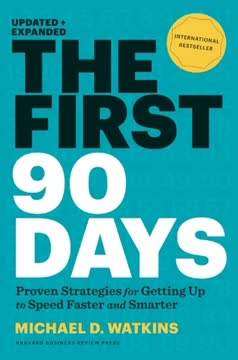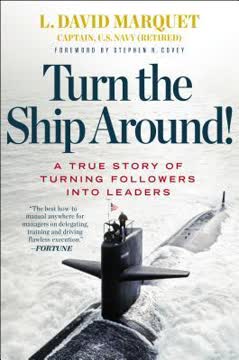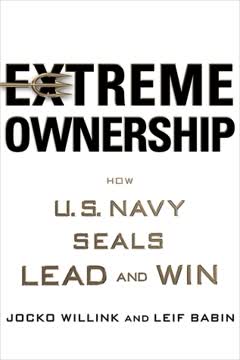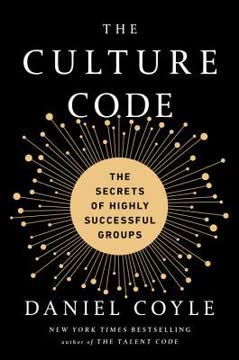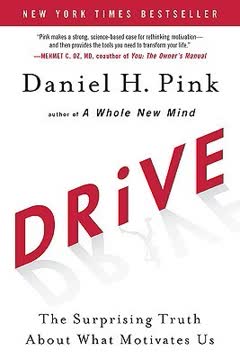つの重要なポイント
1. 安全の輪:組織における信頼と協力の構築
私たちがグループに属していると感じ、共に働く人々を信頼するとき、自然と外部の挑戦や脅威に対して協力するようになる。
信頼は基盤である。 組織は、リーダーが従業員が保護され、価値を感じる「安全の輪」を作り出すときに繁栄する。この環境は信頼、協力、革新を促進し、チームが内部の脅威ではなく外部の挑戦に集中できるようにする。
安全の輪の重要な要素:
- オープンなコミュニケーション
- 相互支援
- 共有された価値観と目標
- エンパワーメントと自律性
従業員が安全だと感じると、以下のことが起こりやすくなる:
- 計算されたリスクを取る
- 自由にアイデアを共有する
- 効果的に協力する
- 組織の使命にコミットする
2. リーダーシップは自己利益ではなく他者を守り、奉仕すること
リーダーシップは少なくするための免許ではなく、より多くの責任を負うことである。
サーバントリーダーシップ。 真のリーダーは、個人的な利益よりもチームメンバーの福祉を優先する。このアプローチは、組織内で忠誠心、信頼、コミットメントを築く。
効果的なリーダーの特徴:
- 共感と理解
- チームのために犠牲を払う意欲
- 他者の発展とエンパワーメントに焦点を当てる
- 成功と失敗の両方に対する責任
他者を優先することで、リーダーは組織全体にポジティブな行動の波及効果を生み出し、相互支援と共有された成功の文化を育む。
3. 私たちの生物学が職場の行動を駆動する:E.D.S.O.化学物質の力
システムがバランスを保っているとき、私たちはほぼ超自然的な能力を得るように見える。勇気、インスピレーション、先見性、創造性、共感などがその例である。
化学的バランスが重要。 エンドルフィン、ドーパミン、セロトニン、オキシトシン(E.D.S.O.)の4つの主要な化学物質が、職場での行動や人間関係に大きな影響を与える。
E.D.S.O.の理解:
- エンドルフィン:身体的な痛みを隠し、忍耐力を可能にする
- ドーパミン:達成のための動機と報酬を提供する
- セロトニン:誇り、自信、地位を育む
- オキシトシン:信頼、忠誠心、社会的絆を築く
これらの化学物質のバランスを取る環境を作り出すリーダーは、より生産的で革新的で結束力のあるチームを育む。職場のダイナミクスにおける生物学の役割を認識することで、組織は従業員の福祉とパフォーマンスをサポートするためのより良い方針と実践を設計できる。
4. 共感と人間関係は組織の成功に不可欠
共感は、ジョニー・ブラボーが説明するように、「リーダーと呼びたいなら、誰に対しても秒単位、分単位で提供すべきサービス」である。
意味のある関係を育む。 今日の高速で技術主導の職場環境では、人間関係と共感が強力なチームと成功した組織を築くためにこれまで以上に重要である。
共感とつながりを育む方法:
- アクティブリスニング
- 対面での交流
- チームビルディング活動
- メンターシッププログラム
- 集団的な成果を祝う
共感と人間関係を優先することで、リーダーはより支援的な職場環境を作り出し、従業員の満足度、忠誠心、生産性を向上させることができる。
5. 抽象化の危険性と人間中心のリーダーシップの重要性
数値的抽象化を通じて人間性から離れると、私たちはミルグラムのボランティアのように非人道的な行動を取ることができる。
メトリクスを人間化する。 組織が成長し、データ駆動の意思決定に依存するようになると、その決定の人間的影響を見失うリスクがある。リーダーは定量的なメトリクスと人々の質的な理解をバランスさせる必要がある。
人間中心のアプローチを維持するための戦略:
- 全レベルの従業員との定期的な対面交流
- 決定の人間的影響を示すストーリーテリング
- パフォーマンス評価に質的フィードバックを組み込む
- 部門横断的な協力と共感を奨励する
人間要素を最前線に置くことで、リーダーは組織とその人々の両方に利益をもたらす、より倫理的で効果的な決定を下すことができる。
6. 短期的な成果と長期的な組織の健康のバランス
利益のために誠実さを犠牲にする価値はない。
長期的な思考。 短期的な成果は重要であるが、長期的な組織の健康を犠牲にしてそれを優先することは有害である。リーダーは、即時の目標を達成することと持続可能で繁栄する組織を築くことのバランスを取る必要がある。
短期と長期の焦点をバランスさせるための重要な考慮事項:
- 従業員の発展と福祉に投資する
- 圧力に直面しても倫理的な実践を維持する
- 革新と継続的な改善の文化を育む
- ステークホルダーとの強力な関係を築く
- 定期的に組織の価値観と実践を再評価し、整合させる
バランスの取れたアプローチを取ることで、組織は持続可能な成功を達成し、挑戦に直面してもその誠実さを維持することができる。
7. 現代の職場の課題を克服する:技術、世代間のギャップ、目的
人間は五万年間、自分自身を奉仕するために駆り立てられるのではなく、他者を奉仕するためにインスパイアされることで繁栄してきた。
適応し、インスパイアする。 現代の職場は、技術依存、世代間の違い、目的の探求など、独自の課題に直面している。リーダーはこれらの問題に対処し、繁栄する組織を作り出す必要がある。
現代の職場の課題を克服するための戦略:
- 技術使用を管理し、対面交流を促進する方針を実施する
- メンターシップとリバースメンターシッププログラムを通じて世代間のギャップを埋める
- 組織の目的と各役割の貢献を明確に伝える
- ワークライフバランスと個人の成長を奨励する
- 意味のある協力と共有体験の機会を作り出す
これらの課題に正面から取り組むことで、組織はよりエンゲージメントが高く、生産的で、充実した労働力を作り出すことができる。
8. 誠実さと責任の文化を創造する
誠実さとは、私たちの言葉と行動が意図と一致しているときのことを指す。
言行一致。 誠実さと責任の文化は、組織内外のステークホルダーとの信頼を築くために不可欠である。リーダーはこれらの価値を一貫してモデル化し、それを強化するシステムを作り出す必要がある。
誠実さと責任の文化の要素:
- 倫理的基準と期待の明確な伝達
- 意思決定プロセスの透明性
- 全レベルでの方針の一貫した施行
- 倫理的行動の認識と報酬
- 懸念や違反を報告するための安全なチャネル
- 定期的な倫理トレーニングとディスカッション
誠実さと責任を優先することで、組織は強力な評判を築き、トップタレントを引き付け、より強靭で成功したビジネスを作り出すことができる。
9. 共有された苦労がチームの結束と革新に与える影響
私たちが思い出すのは仕事そのものではなく、仲間意識、グループが一緒に成し遂げたことだ。
共に挑戦を受け入れる。 共有された苦労や挑戦は、チームの結束と革新の強力な触媒となる。チームが共に困難に直面すると、より強力で結束力のある状態で浮上することが多い。
チームの成長のために共有された苦労を活用する方法:
- 挑戦を集団的な問題解決の機会として捉える
- 小さな勝利と進捗を祝う
- 障害や懸念についてオープンなコミュニケーションを奨励する
- 困難を克服するためのリソースとサポートを提供する
- 困難を克服した後の教訓と成長を振り返る
共有された苦労を受け入れることで、チームはより強力な絆を築き、問題解決能力を向上させ、組織内での革新を推進することができる。
最終更新日:
FAQ
What's Leaders Eat Last about?
- Focus on Leadership: Leaders Eat Last by Simon Sinek delves into leadership dynamics, emphasizing the importance of leaders prioritizing their team's well-being over personal gains.
- Circle of Safety: Introduces the "Circle of Safety," a concept where leaders create a secure environment, protecting employees from external threats and internal politics.
- Biological Basis: Discusses how neurochemicals like oxytocin, serotonin, and dopamine influence workplace behavior and leadership effectiveness.
Why should I read Leaders Eat Last?
- Understanding Human Behavior: Offers insights into the biological and psychological factors affecting workplace dynamics, enhancing leadership practices.
- Improving Workplace Culture: Provides practical advice for creating a positive culture that fosters collaboration and loyalty.
- Real-World Examples: Uses compelling stories from military and corporate settings to illustrate key concepts, making them relatable and applicable.
What are the key takeaways of Leaders Eat Last?
- Leaders Eat Last: Effective leaders prioritize their team's needs, fostering loyalty and commitment.
- Empathy is Essential: Empathy is crucial for leaders, leading to a more engaged and productive workforce.
- Trust and Cooperation: Building trust within teams is vital; when employees feel safe, they contribute more effectively.
What is the Circle of Safety in Leaders Eat Last?
- Definition: A protective environment created by leaders to shield employees from threats and competition.
- Importance of Trust: Fosters trust and collaboration, allowing employees to focus on work without fear.
- Impact on Performance: Organizations with a strong Circle of Safety see better performance due to increased risk-taking and innovation.
How does Leaders Eat Last relate to modern organizational challenges?
- Addressing Disengagement: Provides strategies to combat employee disengagement by fostering a supportive culture.
- Navigating Politics: Helps leaders minimize internal competition and politics, reducing stress and anxiety.
- Long-Term Success: Emphasizes the importance of employee well-being for sustainable success and loyalty.
What role do chemicals play in leadership according to Leaders Eat Last?
- Biological Drivers: Behavior is influenced by endorphins, dopamine, serotonin, and oxytocin, affecting interactions and leadership response.
- Endorphins and Dopamine: Linked to individual achievement; overemphasis can lead to unhealthy competition.
- Serotonin and Oxytocin: Promote social bonds and cooperation, enhancing teamwork and community.
How can leaders implement the principles from Leaders Eat Last?
- Prioritize Well-Being: Demonstrate care for employees through support and empathy.
- Build Trust: Foster open communication and collaboration to establish a strong Circle of Safety.
- Encourage Teamwork: Create opportunities for collaboration and recognize collective achievements.
What are some real-world examples of successful leadership from Leaders Eat Last?
- Military Leadership: The U.S. Marine Corps exemplifies selflessness and mutual support.
- Barry-Wehmiller: Led by Bob Chapman, prioritizes employee well-being, resulting in high loyalty.
- 3M's Innovation Culture: Emphasizes collaboration and sharing, leading to significant innovation.
How does Leaders Eat Last address the issue of corporate greed?
- Critique of Short-Term Thinking: Argues against prioritizing short-term profits over employee well-being.
- Long-Term Success through Care: Companies that care for employees achieve sustainable success.
- Moral Responsibility: Leaders have a moral duty to protect their people, fostering trust and cooperation.
What are the biological drivers discussed in Leaders Eat Last?
- Dopamine and Performance: Drives motivation but can lead to stress if overemphasized.
- Oxytocin and Trust: Builds strong connections and trust among team members.
- Serotonin and Status: Linked to pride and status; recognizing achievements boosts morale.
What are the best quotes from Leaders Eat Last and what do they mean?
- "Leaders would sooner sacrifice...": True leadership involves prioritizing team needs over personal interests.
- "The true price of leadership...": Leadership is about service, fostering loyalty and belonging.
- "When we feel sure...": Trust in leadership leads to commitment and engagement.
What are some best practices for leaders from Leaders Eat Last?
- Prioritize People Over Profits: Focus on employee well-being to build loyalty and trust.
- Encourage Open Communication: Create an environment for sharing thoughts and concerns.
- Lead by Example: Model desired behaviors like empathy and accountability to set the organizational tone.
レビュー
本書『Leaders Eat Last』は賛否両論の評価を受けた。多くの人々は、リーダーシップに関する洞察、特に共感、信頼、人を第一に考えることを強調している点を称賛した。読者は、シネックがリーダーシップの原則を説明するために生物学や心理学を用いたことを評価した。しかし、一部の人々は内容が繰り返しであり、過度に単純化されていて、実践的なアドバイスが不足していると感じた。批評家たちは、この本が明白なアイデアを再利用し、逸話に頼りすぎていると主張した。リーダーにとって必読書と考える人もいれば、シネックの以前の作品に比べて期待に応えられなかったと感じる人もいた。
Similar Books



